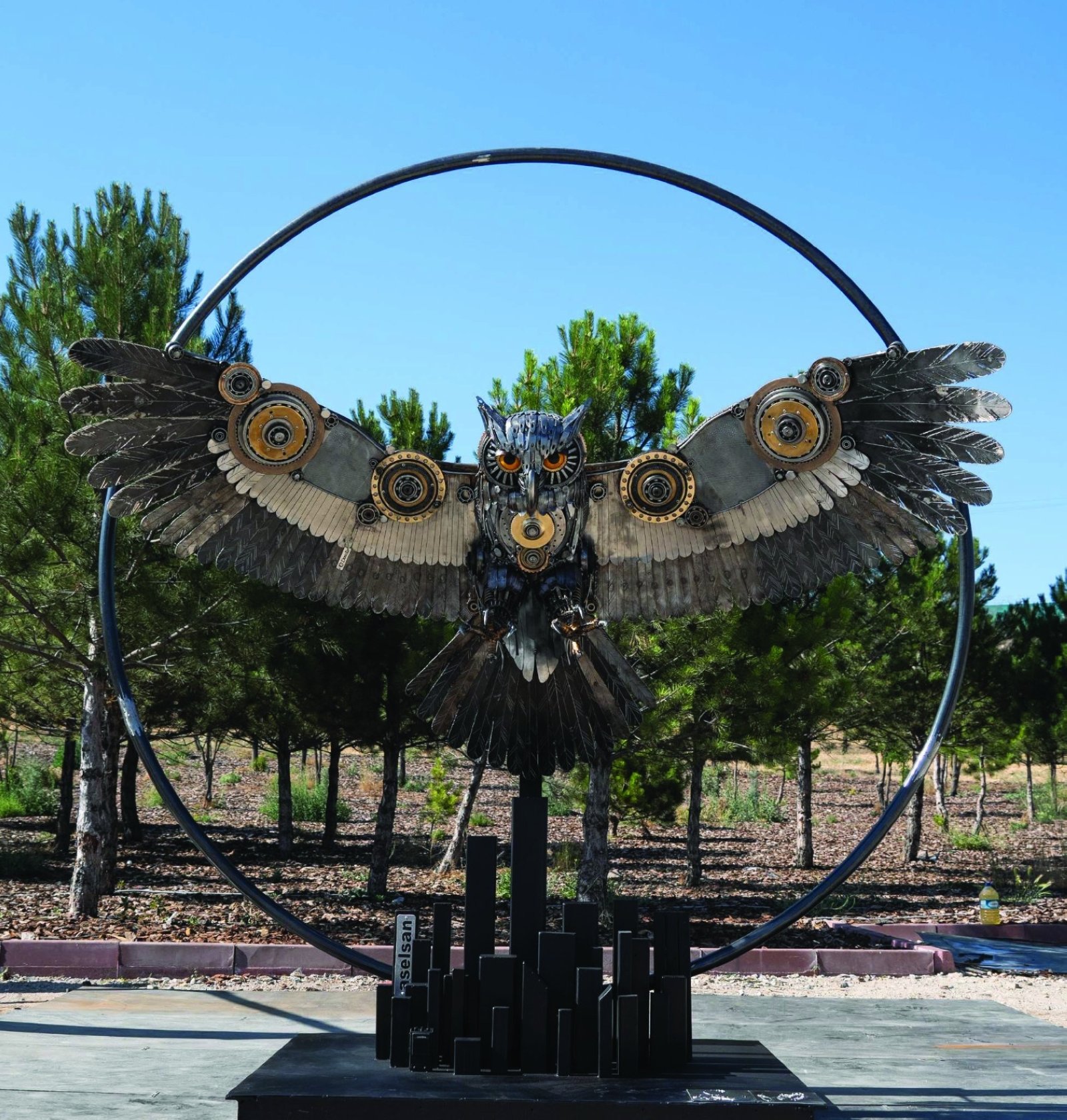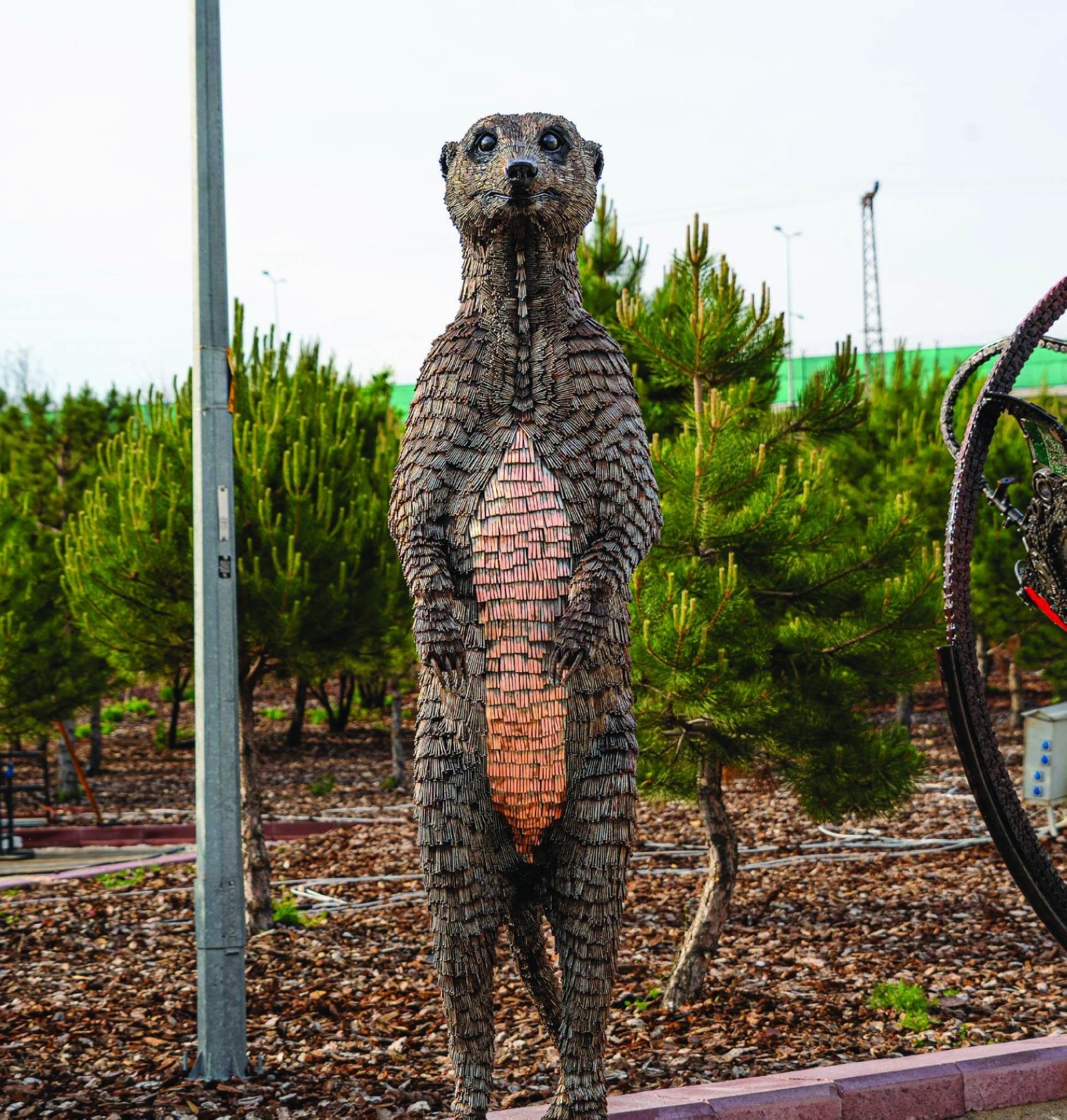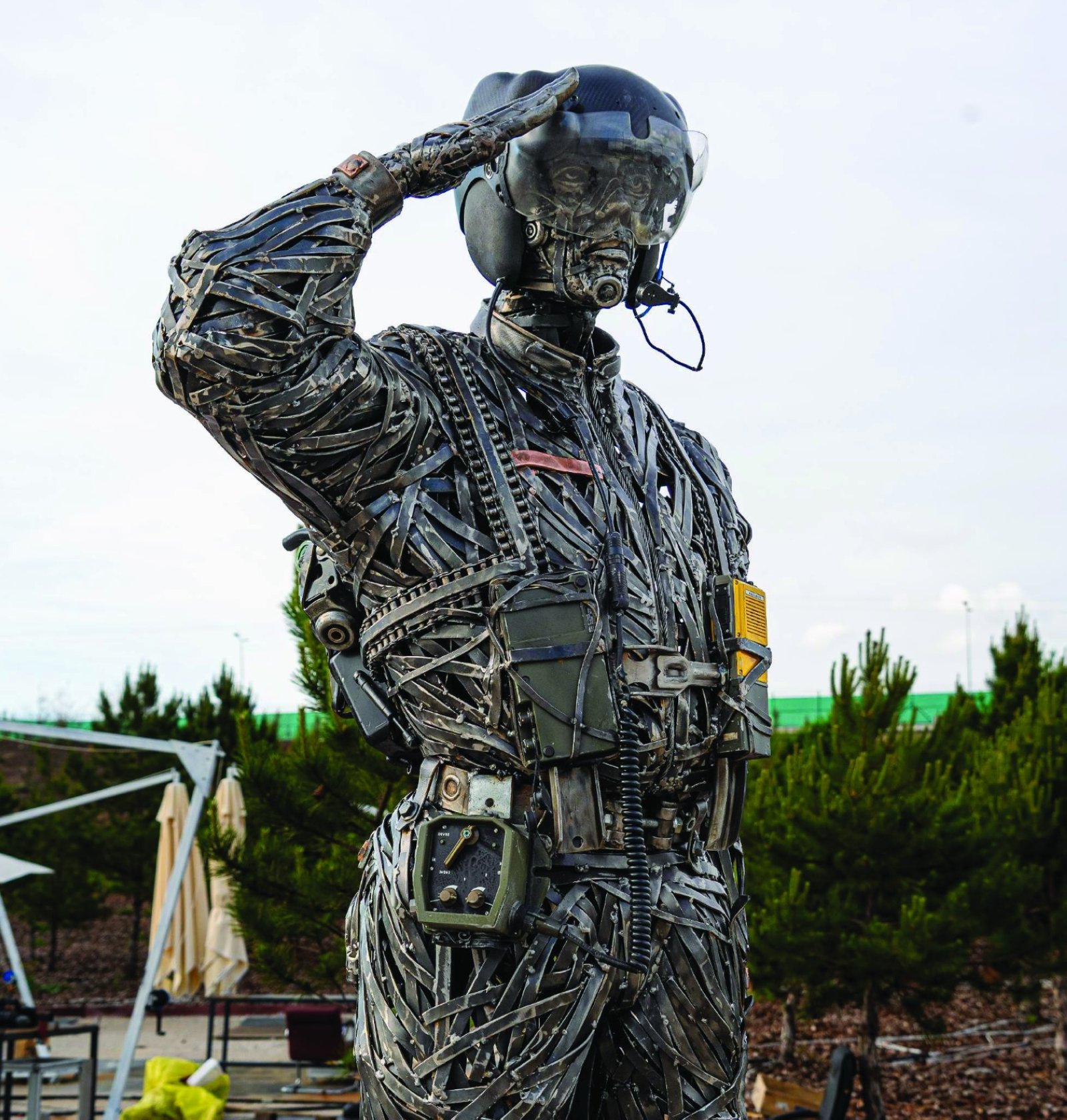Halil Ibrahim Izgi
When we speak of defense, we often think of metal, machinery, precision and power. Yet, in Türkiye – a land shaped by centuries of empire, conflict and culture – the story of defense has always had another layer. One where the forge doesn’t just produce weapons but rhythm, where military rigor gives rise to artistic vision. It is in this tradition that Aselsan, Türkiye’s leading defense and electronics company, now steps forward with a strikingly original celebration of its 50th anniversary.
This is not a military parade, nor a corporate retrospective. It is a global art project, curated by Beste Gürsu, that brings together 21 artists from 14 countries to transform Aselsan’s decommissioned metal parts into monumental eco-sculptures. It is a bold reimagining of what defense can mean – not just the protection of borders, but the creation of dialogue, sustainability and shared imagination.

The dialogue between art and defense in Türkiye is not new. One of the earliest and most poetic examples dates back to the Ottoman Janissary corps. The Zildjian family, who originally crafted cauldron lids for the military, began forging cymbals out of the same metals. These instruments – born in the military kitchens of Istanbul – became the backbone of Ottoman military music, and eventually the foundation of the Zildjian Company, now one of the most respected cymbal manufacturers in the world.
This fusion of martial utility and musical artistry is echoed centuries later in the Ottoman soldier-artists. Figures like Şeker Ahmet Paşa and Hoca Ali Rıza, both trained in military schools, would become pioneers of Turkish painting – blending European techniques with local sensibilities to document and reflect the changing empire. Even earlier, Matrakçı Nasuh, a 16th-century polymath, painted intricate miniatures of military campaigns that served not only as visual records but as mesmerizing works of art – chronicling the empire’s reach while celebrating its visual complexity.

Fast forward to 2025. In the heart of Türkiye’s capital, Aselsan has turned its Gölbaşı campus into an open-air gallery of transformation. With materials sourced from obsolete machinery and defense equipment, artists have created a collection of large-scale sculptures – some standing 5 meters (16.40 feet) tall – that reinterpret the company’s technological journey through the lens of biomimicry, drawing inspiration from the rhythms and forms of nature.
The project was first unveiled at IDEF, Türkiye’s major international defense industry fair. There, amid missiles, drones and radar systems, stood towering sculptures – spiraling, branching, glowing – offering a moment of pause and reflection amid the machinery of power.
Now, back in Gölbaşı, these works live permanently within Aselsan’s campus, marking a new chapter not just in the company’s history, but in the evolving relationship between technology, sustainability and creative thought.

“Defense is often seen in isolation – technical, strategic, utilitarian. But at Aselsan, we believe it can be part of a broader cultural conversation,” says Aselsan CEO Ahmet Akyol.“Through this project, we’re not only giving new life to retired components, we’re building a new visual and emotional language for the future. It’s a way of honoring our heritage while imagining what’s possible when industry and imagination meet.”
Indeed, in a time where global divisions can feel overwhelming, Aselsan’s 50th anniversary project offers a model of creative diplomacy – artists from Argentina, Australia, Brazil, France, India, Iran, Italy, Japan, Malaysia, Mexico, Nigeria, Russia, the United States and Türkiye working with the same materials, speaking through sculpture across borders.
The works themselves reflect a wide spectrum of interpretations and cultural backgrounds. From the vibrant imagination of Nigeria’s Dotun Popoola, who contributed the towering “Kangal” sculpture, to the intricate metalwork of Japan’s Sayaka Ganz and her soaring “Seagull,” each piece brings a different story, a new rhythm. Each of these artworks corresponds to an Aselsan product, highlighting the deep link between the company’s technological heritage and the creative reinterpretation. Argentina’s Julian Andres Provenzano sculpted a regal “Lion” (“Aslan”), while Brazil’s Michel Torres Costa presented the sharp and deliberate “Scorpion.” Artists such as Ayooluwa Samuel Akinrinola, with his Stingray and Ivan Iler from the U.S., with Gecko, found in Aselsan’s metal scraps the bones of new beings – part machine, part myth.

Each artwork does not merely fill space; it creates it. Italy’s Dario Tironi shaped “The Engineer,” a humanoid reflection of technical evolution, while Iran’s Hasan Novrozi’s “Eagle” seemed to take flight from the remains of machinery once grounded in function. The works span continents and ideas: from Malaysia’s bird’s-eye “Abstraction” by Anniketyni Madian to Russia’s desert-alert “Meerkat” by Alexey Medvedkov.
Displayed together at the Aselsan Gölbaşı campus, these pieces form more than a collection – they construct a living archive. An archive not of war, but of imagination retooled. They are monuments not only to past technology but also to what those materials might still become. In this sense, the exhibition does not simply conclude a 50-year story – it opens another.
Aselsan’s initiative reminds us that the most enduring legacies are not only forged in fire, but also reimagined in form. And in a world seeking new ways to connect, this project suggests that the future of defense may lie not only in protecting what we have, but in creating what we have yet to dream.
Courtesy: Dailysabah